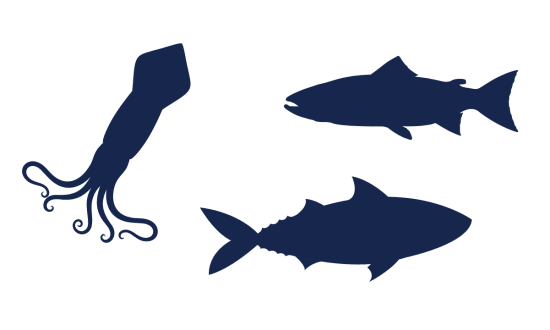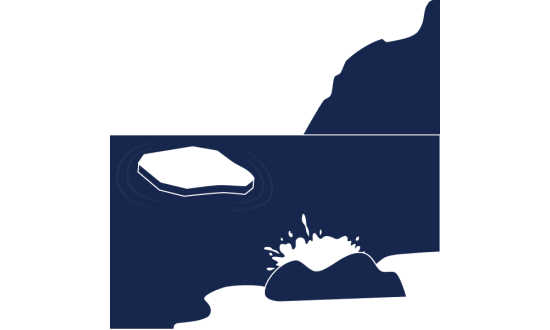
Steller Sea Lions
Size
Males: up to 11 feet long and up to 2,500 lbs. Females: up to 9.5 feet long and up to 800 lbs

Diet
Diet varies depending on time of year but mostly: mackeral, walleye pollock, salmon, Pacific cod, Pacific sand lace, flounder, capelin, squid

Habitat
Open ocean ice, gravel or sandy beaches and rocky reefs

Range
Cold to temperate subarctic waters of Northern Pacific Ocean, coasts of Alaska and California
Conservation Status
Least Concern
Near Threatened
Vulnerable
Endangered
Critical
Extinct in Wild
Extinct
Steller sea lions will feed on over 100 different species of fish!
Among the largest species to call Mystic Aquarium home, the Steller sea lions are also the largest of the Otariidae family (the group that includes sea lions and fur seals). Males can reach sizes of 11 feet in length and 2,400 pounds, while females are smaller at nine-and-a-half feet in length and 700 pounds.
Because of their size and rotating rear flipper, Stellers can climb rocks or cliff faces, an action you can see in our Pacific Northwest habitat.
steller sea lion fact sheet
Steller Sea Lion Quick Facts
Status
Steller sea lions are protected under both the Endangered Species Act and the Marine Mammal Protection Act. The western distinct population segment is listed as endangered under the ESA. They are classified by the IUCN Red list as Near-Threatened.
Threats
Habitat loss, pollution, fishery and human interaction like entanglement, vessel strikes and illegal hunting, offshore oil and gas exploration.